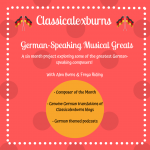Ludwig van Beethoven: Symphony No.1
Context
Ludwig van Beethoven grew up hearing and learning about the symphonies of his predecessors such as Mozart and Haydn. When he was a boy, Mozart was penning his famous Salzburg symphonies, and when he was a teenager, Mozart was writing his perennial late symphonies. In the same year that Beethoven began sketches of his First Symphony, Haydn had premiered his 103rd and 104th symphonies.
Although he began composing the symphony in 1795, the work did not appear in its entirety until 1800. The work bears much resemblance to the classical style that he had grown up with. However the symphony was also hailed as fresh, new and exciting, with Beethoven being dubbed as the voice of the future in the symphonic world.
Symphony No.1 premiered on April 2nd 1800 at the Burgtheater in Vienna. The piece was subsequently published the next year by Hoffmeister & Kühnel of Leipzig. Beethoven used the premiere of this work to show Vienna the talents he possessed – which certainly seemed to work for him.
The Music
Set in four movements, Beethoven’s First Symphony is scored for a traditional classical orchestra.
Movement I – Adagio molto – Allegro con brio
Opening with a series of chords from the winds and horns accompanied by pizzicato strings, the sparse opening makes the tutti sections much more impactful. This introduction goes away from the classical style introduction, which certainly caught the attention of critics and audiences at the time. As the tempo changes the strings take over the memorable theme. Beethoven also utilises different dynamics throughout, such as fp, to create drama around the music. This was something that wasn’t as widely used at the time.
The lyrical theme between the oboe and flute brings the work back firmly into classical traditions, however now with Beethoven’s harmonic colourations and dramatic dynamics. The movement ends with a glorious tutti section that leads to a succession of big chords.
Movement II – Andante cantabile con moto
The simplistic second movement takes the opening theme and uses it for the whole movement. Beethoven utilises the whole orchestra in this movement too, something that was not always seen at this point in history. He uses the extra instruments to create timbral colours which, in turn, create gloriously rich textures.
Movement III – Menuetto
The title of this movement is slightly misleading, as one would expect a stately minuet dance to be at the heart of the music. However, the music soon springs into an animated and energetic scherzo. The brisk pace is relentless and carries the melodies through the orchestra at quite the pace. The boisterous timpani adds drama and excitement to the texture in the opening statements. Beethoven was evidently wanting more zest and animation in this movement, with musicologist Maynard Solomon commenting that “The third movement was a fitting goodbye to the eighteenth century.”
The graceful and lyrical trio provides some light and shade into the movement before the opening theme bursts back. The pace and intensity are reignited until the exciting end.
Movement IV – Allegro molto e vivace
The slow opening of the finale movement harks back to the first movement, which saw an unusual introduction before the music races off. Short scale fragments are played by the first violins, which build on the tonality of the movement. The rather unusual opening soon fades into the past as the high-spirited strings enter with the first theme.
The movement is awash with flurries of string melodies, with all the best parts of the previous movements being showcased in this final movement. The quick changes in tempo, Beethoven’s use of dynamics and texture, plus the drama threaded throughout the music makes this one of Beethoven’s most-loved works. The novelty of the general pause is used for dramatic effect, which all of a sudden stops the whirling music before the almost immediate re-entry into the energetic movement.
Final Thoughts
Although this was the first of nine symphonies that Beethoven penned, the First remains one of his most important. The work is a statement to the world and foreshadowed the changes that were to come in the future. The work is high-octane and showcases some of the best that Beethoven had to offer at the time. It is still one his most popular works to date.
Ⓒ Alex Burns
Happy Reading!
You might also enjoy… Johannes Brahms: Symphony No.1
*This blog is part of the German Speaking Musical Greats Project 2019/20

Recommended Recordings:


0 Comments